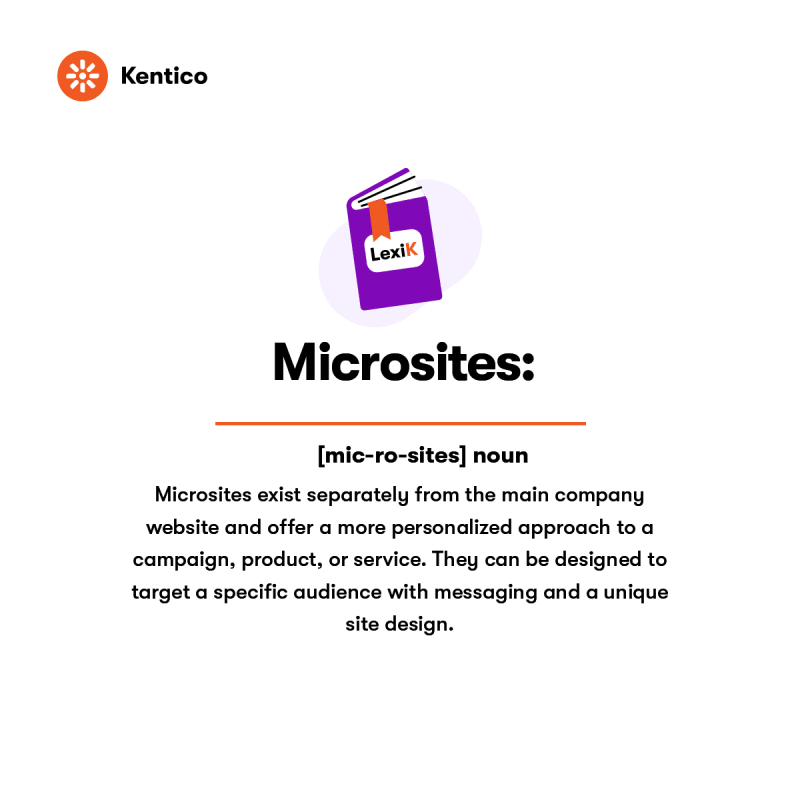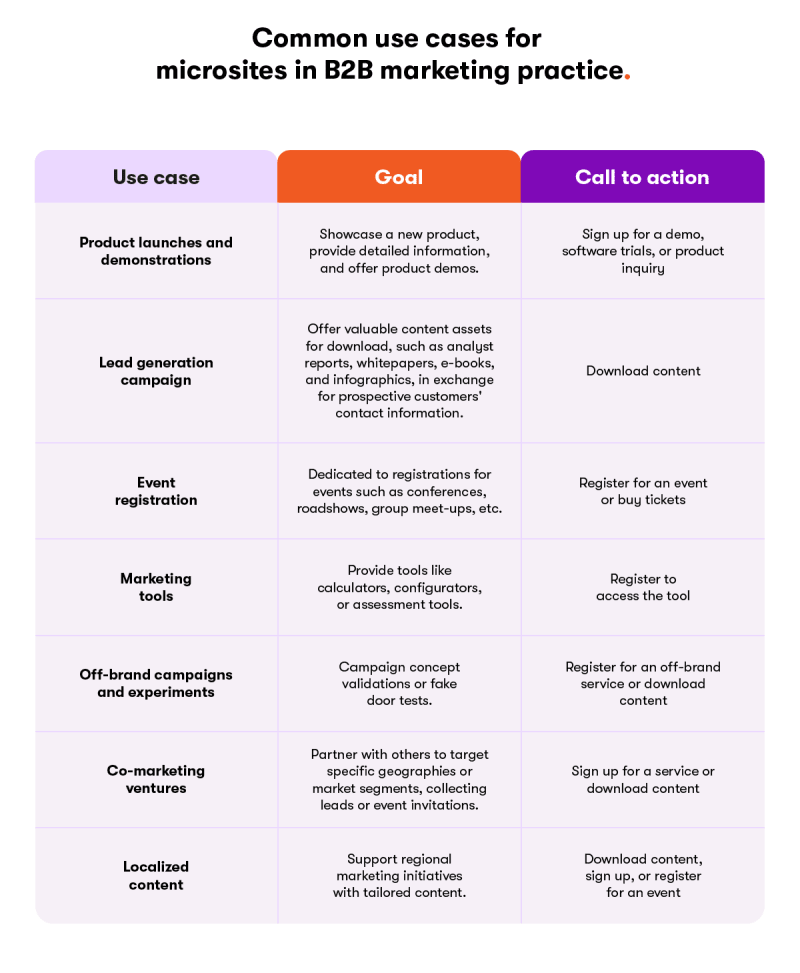Since the rise of online marketing, the term "microsite" has been a part of marketing jargon for over twenty years. Microsites are used across various industries, from FMCG and finance to tech. They focus communication on a specific product, campaign, or event that may not receive sufficient attention on the main website. In this article, we will delve deeper into what microsites are, microsite benefits—particularly in B2B marketing—when and why marketers should use them.
What are microsites and what's their business purpose?
What are microsites?
Microsites are focused pages that stand apart from the main website structure. Compared to a main website, a microsite is much smaller, typically containing three to eight pages. It does not share the corporate website's navigation, footer, or layout. Microsites often adopt a unique campaign look and feel, with distinct messaging and tone of voice for a personalized customer experience. Because of their specific, narrow purpose, they do not need to provide general information about the company, blog content, or details about the entire product portfolio. Microsites typically reside on a separate domain or subdomain.

What is their purpose?
The purpose of any marketing initiative should ultimately support the primary goal: generating revenue. However, in B2B marketing, the sales process is typically lengthy, and marketing activities only contribute partially to revenue. This is why it's important to focus on intermediate goals—conversions.
The purpose of microsites is to convert visitors—in other words, to prompt them to take a desired action. This is often easier to achieve on a microsite than on the main website because microsites can target a specific audience or a narrow topic, making them valuable assets for B2B conversion optimization.
Landing pages vs. microsites
Microsites are sometimes confused with landing pages. However, landing pages are single-page sites with a single call to action, typically hosted as a subpage of the main website's domain. Additionally, it’s common for both microsites and landing pages not to be accessible via the corporate website’s navigation.
Microsite best practices
The ideal use of microsites is when there’s a need to create a focused and targeted digital experience that differs from the brand messaging on the main website. This approach is particularly useful when promoting a specific product or targeting a persona that is not the primary focus of your main website. Microsites are also effective for time-limited communications, such as campaigns, product launches, events, discounts, or other temporary initiatives.

Benefits of microsites
Compared to corporate websites, microsites offer much greater freedom in many aspects. The main benefits include:
Better targeting: Microsites are a niche marketing technique that allows for tailored content and design, with messaging, tone, and visuals distinct from the main corporate website, targeting specific personas. For instance, a bank can run a campaign targeting young adults with informal language and bold visuals, while the main site caters to older, family-oriented personas.
Less disruption: Thanks to their single purpose, microsites don’t need to include unnecessary content. For instance, navigation can be minimized, as only a very small number of pages are required.
Higher conversion probability: Due to their single purpose, better targeting, and the potential to drive more relevant traffic, microsites can achieve higher conversion rates. The traffic driven to microsites is typically more engaged with the specific topic the microsite focuses on, leading to a higher likelihood of conversion.
SEO potential: Although the domain authority of a microsite may be lower than that of your main website, there is more room for targeting niche keywords.
Clearer data view: It is easier to track the performance of a small website like a microsite, and with only one or very few CTAs, it becomes much easier to gain clear and conclusive insights compared to the main website, which has more complex visitor flows.
Tech stack freedom: From a technology perspective, marketers have the freedom to launch a microsite on any Content Management System (CMS) they prefer, allowing for the fastest time to market. However, this freedom can be a double-edged sword, as it might lead to unmanageable tech stack complexity and security issues in the future.
Understanding microsites can help businesses execute their content strategies with impact. Stay tuned to learn more about how to effectively manage microsites for your business. In the meantime, download our free ebook Consolidation unlocked to learn how to fortify your martech ecosystem.


